If you read the Journal, you already know Why do we buy online and are familiar with the Types of E-Commerce customers.
Today, we'll ponder the problem of the willingness to buy online. We'll also closely examine the issue of E-Commerce sales regarding products that are considered hard to sell online.
Do these still exist, though? Of course!
Remember, you can buy everything online, but not everything can be easily sold.
There are groups of products whose selling in E-Commerce is simply problematic and requires a different approach to the User Experience.
So today, we'll discuss such products and how to sell them in an online store.
We'll also talk about the customers themselves — their types, relationship with products, E-Commerce trends, and attitudes toward online shopping.
Hard-to-sell products
We can bet that you probably immediately thought of some very expensive collector car, yacht, or a kilogram of potatoes.
Potatoes are in the store next door, so buying them during a walk is more straightforward and cheaper. However, things look slightly different when you want to buy a ton of potatoes. Then it's definitely better to order them online and wait for a delivery.
Products that are currently popular are also hard to sell. High demand often goes hand in hand with high supply, and big competition never makes it easy to sell online.
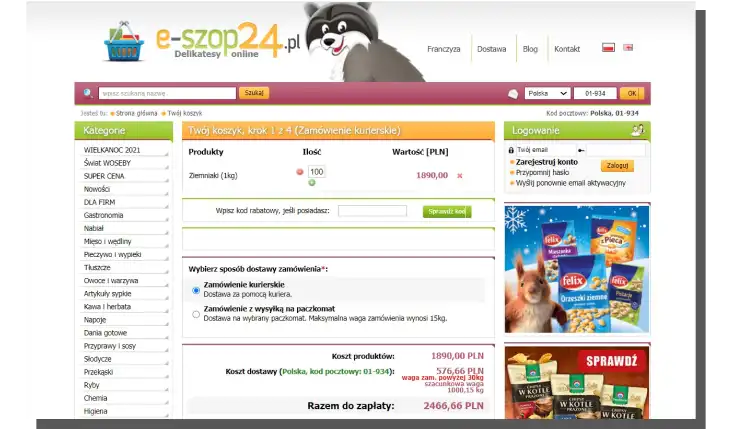
Based on these simple examples, you can clearly see that the easiness/difficulty of online sales is a matter of the following:
- Nature of the product (e.g., mass/unique)
- The need for its verification, testing, trying on
- Physical characteristics of the product (e.g., dimensions, color accuracy)
- Functional features (e.g., sharpness of the knife)
- Scale and volume of the purchase
- Availability of the product (e.g., stock levels as well as general availability on the market)
- Shopping habits
As well as:
- Expiration date of the product
- Special transport conditions
- Past experiences with online shopping
- Reasons for purchase
- The number of senses necessary to assess the quality, suitability, and usefulness of the product
- Last but not least, the way how the product is presented in the online store.
Effective online sales are a product of the above factors and many others that we won't mention in this article. These problems require a separate one.

Customer relationships with products
Suffice it to say that online sales in E-Commerce are the art of creating experiences and fulfilling needs regarding information, emotions, and senses. Don't you believe us?
Then listen to what Dr. Liraz Margalit has to say in her article "Sensory Marketing; The Smell of Cinnamon That Made Me Buy," published in Psychology Today.
There is an obvious boundary of sensory experience in the digital world. Hence, it is crucial to evoke as much cognitive engagement as possible with the available senses, namely sight and hearing.
In the physical world, the possibility of touching an object creates stimulation that triggers the buyer's touch receptors. When shopping in online stores, customers can't touch products or familiarize themselves with them through direct interaction.
Despite these limitations, as Dr. Margalit notes, interaction with a digital representation of the product activates the same paths in the brain. Thus, creating experiences referring to many senses it's one of the most effective ways to create unforgettable customer impressions.

It's worth supplementing these remarks with Dr. Ian Zimmerman's observations published in the article "What Motivates Impulse Buying?" When analyzing the problem of interaction, relationship emotions, and the distance between the buyer and the product, he reached the following conclusions:
- A physical connection with the product appears when people are close to it and when they can touch it.
- A temporal connection with the product occurs when people can buy it immediately.
- A social connection with the product happens when people see how somebody else uses it and compare themselves with that person.
Notice that it's possible to trigger these three dimensions in the online store. We'll write more about this later.
Online store customers' attitude towards online shopping
They like what they know best. It's obvious. It's not different with online shopping.
Customers find the most convenient to buy the following types of products:
- Products that they well-know
- Products from brands or manufacturers that are well-known to them
- Purchases from online stores they well-know
- Products with low risk (regarding finances, situation, or time)
- Convenient products or with good benefits that have significance to them (e.g., discount, free delivery, free returns).
Are these the only possible reactions and attitudes customers can have toward online shopping? Definitely no!
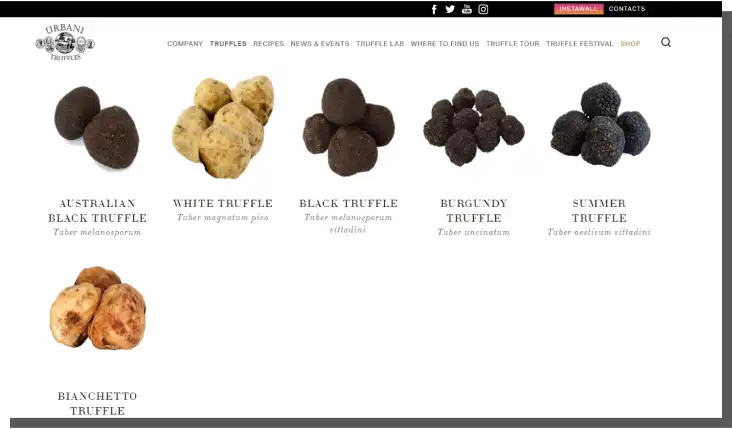
Marcin Gąsior, in the article "Consumers' attitude towards Internet-based transactions - segmentation attempt," distinguishes 6 types of attitudes toward online shopping. These attitudes are the basic criteria for distinguishing 5 types of customers, namely:
- Skeptics
- Critics
- Uncertain
- Cautious
- Enthusiasts.
Skeptics are people who:
- Extremely dislike online shopping
- Focus on the negative aspects of E-Commerce
- Don't appreciate and underestimate the positive features of E-Commerce
- Need contact with a salesperson; they appreciate the ability to view the product
- Have little experience with online shopping.
Critics are customers who:
- Constantly criticize the advantages of E-Commerce and doubt their value
- Aren't supporters or prominent opponents of online shopping
- Only value low prices, the convenience of delivery, and the range of the offer
- Have some experience with online shopping.
Uncertain people:
- Have an ambivalent approach to online shopping
- See the advantages of E-Commerce as well as its disadvantages
- Pay attention to payments and delivery methods
- When choosing between two equally attractive alternatives: stationary vs. online purchase — they will select the first one.
Cautious customers:
- Are simultaneously skeptical and very open to online shopping
- Value attractive prices, the convenience of shopping, and home deliveries
- Keep a distance and are careful when it comes to payment in advance and through online payment methods
- Have experience with online shopping but still prefer purchasing in stationary stores.
Enthusiasts:
- Like online shopping
- Value attractive prices in online stores
- Use price comparison websites
- Appreciate time-saving
- Accept delivery costs, waiting time, and the necessity to pay with a card.
Let us recall the results of another study that will shed some light on other aspects of this problem.
In the article "Psychological predictors of online shopping behavior," the authors create a fascinating characteristic of online store customers based on their own research and those of other scientists.
Customers of the E-Commerce market are:
- More trusting toward other people
- More open — they more often use new technologies on a daily basis
- Impulsive in terms of consumer decisions
- Innovative
- Brave — they have a higher threshold of risk tolerance
- Curious — they need more diversity in terms of consumption
- More open to novelties — they are quicker to accept new products appearing on the market.
How to use these characteristics to run an online store, for marketing, and in the design of E-Commerce User Experience? First and foremost, you should treat them as knowledge about who buys, how they buy, why they buy, and what they expect.
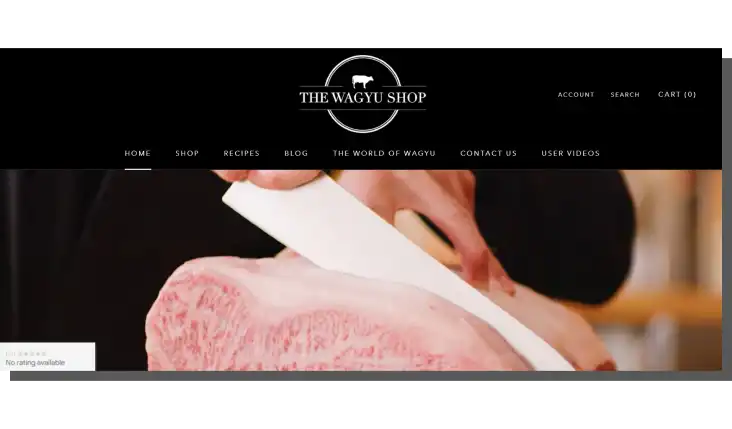
Expectations of online store customers and the E-Commerce industry change along with age.
The younger the customer is, the more complex these expectations are and the farther away from the simple need to purchase a consumer good.
In Accenture's report "How does generation Z buy in the covid era?" you can find a fascinating profile of online store customers whose expectations and needs will soon become a norm. Representatives of Generation Z expect the visit to an online store to be a social experience, a form of spending free time.
An experience that not only leads to purchase but primarily allows them to spend time in an attractive way. This added value increasingly often supports E-Commerce sales.
Alright, let's move on to our key question: How to sell hard-to-sell products online?
UX optimization in E-Commerce. How to sell perishable goods online?
We're sure you know the popular memes like Advertisements vs. Reality, in which images of products from the ads and their actual appearance are compared. These differences can sometimes be amusing, at least until you are the one experiencing them.
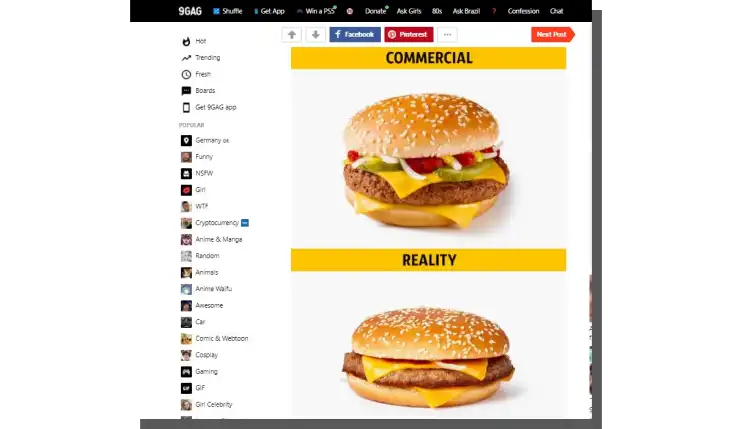
It's no different with the perishable goods in online stores. Before we get into the details, we'll answer the question: What are these kinds of products?
Perishable goods include the following:
- Food (fresh, frozen, and ready-made products)
- Plants.
Customers are usually concerned about the quality of the product after it's delivered. No one wants to receive broken flowers, rotten apples, or spoiled meat.

From the perspective of UX, convincing even the bravest online store customer means offering:
- Illustrative
- Exhaustive
- Specific
- Expressed in numbers
information and guarantees regarding the terms of delivery, time of delivery, standards of delivery, and security measures.
First and foremost, buyers of perishable goods want to know the following:
- In what way will the products be packaged?
- How will they be transported?
- How long will the products be transported under the given conditions?
- When will the products be delivered?
- How to treat it after receiving it?
- How to recycle the packaging?
- What precautions to take?
Hence, the essential elements of a product card for the perishable product include the following information:
- On transport and logistics
- On manufacturer or country of origin
- On ways of storing
- On contraindications for use or consumption
- Infographics (e.g., explaining the course of the entire process)
- Signs and symbols (e.g., indicating held certifications or implemented standards)
- Clear descriptions of product vulnerability, transportation, and packaging methods
- Dates (delivery date, date of manufacture, and expiration date).
How to increase sales of expensive products in E-Commerce?
Authenticity, real value, quality, condition, and realistic appearance are some of the most significant concerns and risks faced by a customer of an online store selling, for example, jewelry, cars, or antiques.
Expensive products primarily evoke the need for direct contact, the desire to use, test, try on, check condition or take a closer look at details.
How they're presented on the product card and how their key features (from the perspective of the buyer) are reproduced is the essential issue for ensuring a positive user experience.

Authenticity, value, and quality should be proved with external means in an adequate form for a given product. And these can include the following:
- Certificates
- Analyses
- Reports
- Confirmations
- Appraisals.
Quality, condition, and appearance should be presented with the following:
- High-quality and illustrative photos (macro and micro)
- Videos.
Contact with highly qualified customer service that can satisfy curiosity, dispel doubts, and provide knowledge and advice is vital.
Equally crucial is the ability to book meetings in showrooms.
It's also worth remembering that expensive and luxury goods often serve to elevate and signal status and prestige.
Hence, it's essential to highlight information about aspects that indicate this status, namely:
- Brand
- Name of the creator/designer
- Quantity (indirectly indicates exclusivity, uniqueness, and originality)
- Materials
- Technology, techniques (also determines the uniqueness)
- Size, dimensions
- Descriptions of functions.
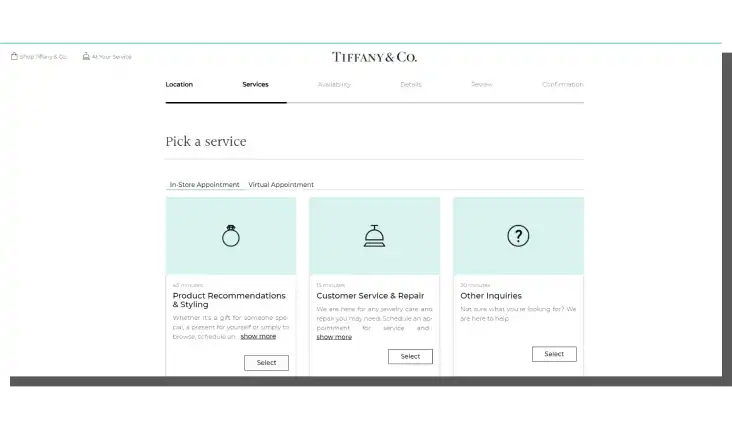
UX solutions for E-Commerce supporting the sale of tactile products
The Internet is a medium relying on sight and hearing. Naturally, online stores can't provide tactile sensations to their customers.
The capability to touch, use, try on, test, and compare will always work in favor of stationary stores.
However, people are very prone to suggestions; we've proven this above. They can build a relationship with a product through photos, videos, animations, graphics, and 3D objects (360° visualizations), including the opinions of other buyers.
Social proof sometimes is a stronger motivator than the opportunity to touch the product.
It's worth remembering that the chance to find many opinions about the product is close to zero in stationary stores.
How to increase the user experience in stores offering products whose quality, value, and usefulness can be seen, felt, and recognized only after purchasing?
How to sell products whose price is so dependent on the contact with them?
Definitely through the following:
- Appropriate language aimed at the reproduction of impressions and emotions the product evokes
- High-quality photos made at various angles that present the product and typical ways of using it
- 2D and 3D animations and presentations
- Details and close-ups that allow customers to see their essential attributes
- Presenting in context to show the size, proportion, scale, and functionality
- Offering samples (e.g., cloth)
- Providing free deliveries and returns as a standard
- Offering virtual fitting rooms (used more and more frequently and with increasing success by online stores selling clothing and prescriptive eyewear).
How to sell hard-to-sell products online? Summary
- You can buy everything online, but not everything is easy to sell.
- There are three groups of products whose sale is particularly problematic and requires a unique approach to user experience.
- It's cheaper to buy a kilogram of potatoes during a walk. However, if you want to buy a ton of potatoes, then it's easier online.
- The easiness/difficulty of selling online is a matter of, among others, the number of senses needed to evaluate the quality, usefulness, and suitability of the product and how it's presented in the online store.
- There is an obvious boundary of sensory experience in the digital world. It's essential to evoke as much cognitive engagement as possible through the senses of sight and hearing.
- A physical connection with the product appears when people can touch it.
- A temporal connection with the product occurs when people can buy it immediately.
- A social connection with the product happens when people see how somebody else uses it and compare themselves with that person.
- There are 5 types of customers: Skeptics, Critics, Uncertain, Cautious, and Enthusiasts.
- Customers are usually concerned about the quality of the perishable products after they're delivered.
- Buyers of perishable goods want to know: how and in what the products will be packaged, how the products will be transported, and how long the products will be transported under given conditions.
- Expensive products are often used to elevate or signal status and prestige.
- Tactile products should be presented with photos, close-ups, fitting rooms, videos, animations, graphics, and 3D objects (360° visualizations).
- Social proof sometimes is a stronger motivator than the opportunity to touch the product.
- Finding many opinions about the product in stationary stores is impossible.






